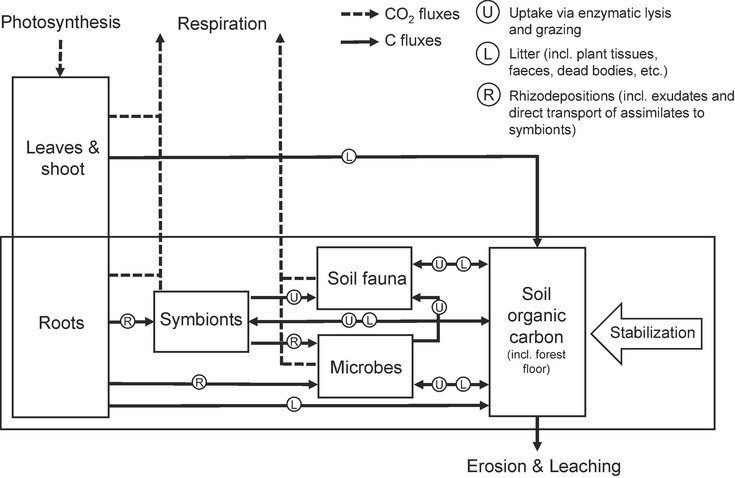Research Interests

Source: https://www.sciencedirect.com/science/article/pii/S0378112720300268. Photo credits others than authors: Google Earth (Conversion of primary forests), O. Eckmüllner (Removal of harvesting residues), D. Binkley (Selection of species with N-fixing associates) T. Waldrop (Fire management).
I am a forest ecologist focusing on soil carbon and nutrient cycling in forest ecosystems. My research aims to understand how natural disturbances, forest management, and climate change affect these cycles. I am interested in soil microbial communities, especially fungi, and their role in plant-soil interactions and ecosystem functioning. My research combines laboratory and field experiments, meta-analyses, and modelling. I use stable isotope-based methods, carbon flux measurements and DNA-based techniques.
I have been involved in research projects on windthrow, bark beetle outbreaks and clearcutting in the European Alps, forest harvesting intensities in the Dinaric Mountains, insect outbreaks in northern Scandinavia, and drought in the Himalayas.
Ongoing Projects
Succession and soil carbon cycling after forest disturbance
Forest soils store large amounts of carbon (C) and are a globally important sink for atmospheric CO2. Forest disturbances, e.g. by windthrow, are increasing due to a changing climate and thus pose a significant threat to soil organic C (SOC) storage. After disturbance, SOC stocks decline with soils typically becoming a distinct C source until succession and/or forest management return the ecosystem back to a forested state. Across Europe, tree regeneration is often inhibited by ungulate herbivory and dense herbaceous vegetation, and ecosystems remain in grass-dominated states for decades. The impact of these diverging successional pathways – either as tree regeneration or as prolonged grass cover – on SOC dynamics is highly unknown because a multitude of plant-soil feedbacks are involved and underlying processes have hardly been studied. The project aims to link successional plant groups, associated soil fungi, decomposition and SOC storage. It is hypothesized that soil fungi associated with each succession type will exert a dominant influence on SOC dynamics. Most temperate trees form symbiosis with ectomycorrhizal fungi, while grasses are primarily associated with arbuscular mycorrhizal fungi. In comparison to arbuscular mycorrhizae associated with grasses, symbiosis of ectomycorrhizae with trees is hypothesized to increase decomposition of older SOC. The project is based on a series of approaches ranging from naturally disturbed forest stands to controlled microcosm experiments. At windthrow sites with tree regeneration and prolonged grass covers, soils will be density fractionated and analyzed for their isotopic composition and radiocarbon (14C) ages, which allows the quantification of C inputs from new plant-derived sources and C losses from older SOC pools. These results will then be linked to fungal communities measured by DNA-based techniques and soil C fluxes. In microcosms, it will be determined whether plant types and associated mycorrhizal fungi differ in their C inputs into soils and in stimulating SOC decomposition. Overall, the project will provide novel insights into the complex field of disturbance ecology with a focus on understudied belowground processes by combining advanced techniques with innovative experimental set-ups from the plant to the ecosystem scale. The findings of this study will be of interest for microbiologists, functional ecologists, ecosystem modelers and will be published in high profile journals. Moreover, the project is highly relevant for policy makers and forest practitioners, as it will help to better evaluate how disturbance regimes and succession influence the climate change mitigation potential of forest management. The project is being carried out in collaboration with the Swiss Federal Institute for Forest, Snow and Landscape Research (WSL).

Source: Mayer et al. 2020 Forest Ecology and Management. https://www.sciencedirect.com/science/article/pii/S0378112720300268

